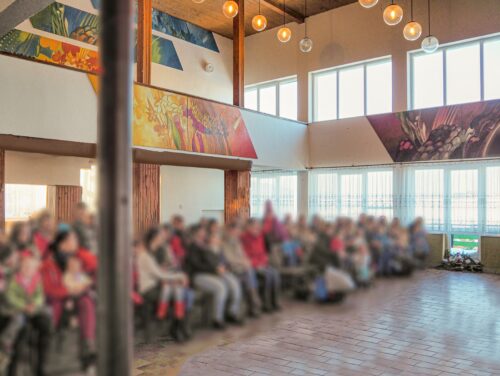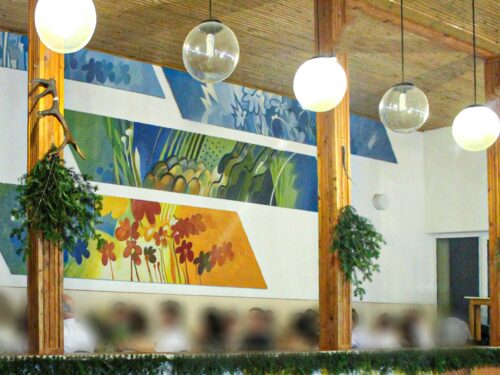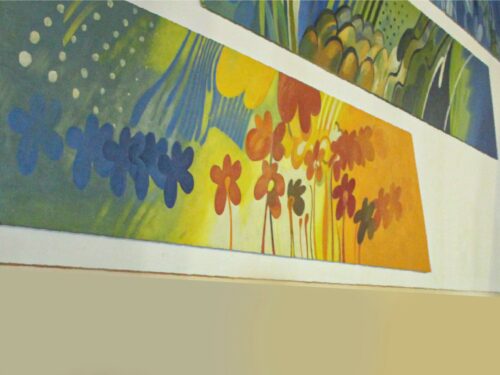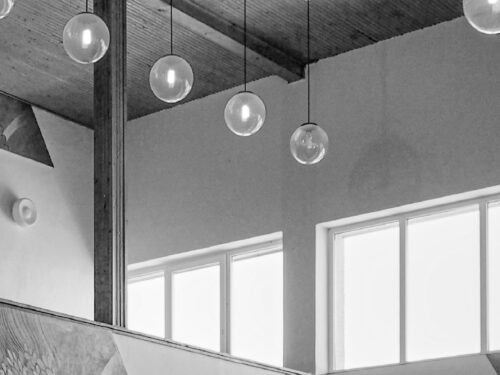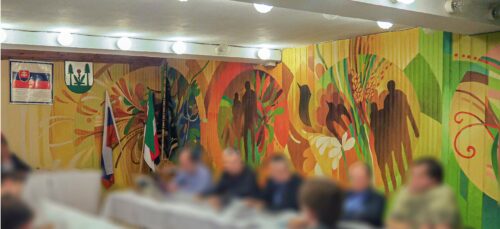Municipal Office
Category: Administrative institutions
Architect: Jozef Slíž
Work of art: Ladislav Berger
Location: Oravské Veselé 374
Built in years: 1971–1982
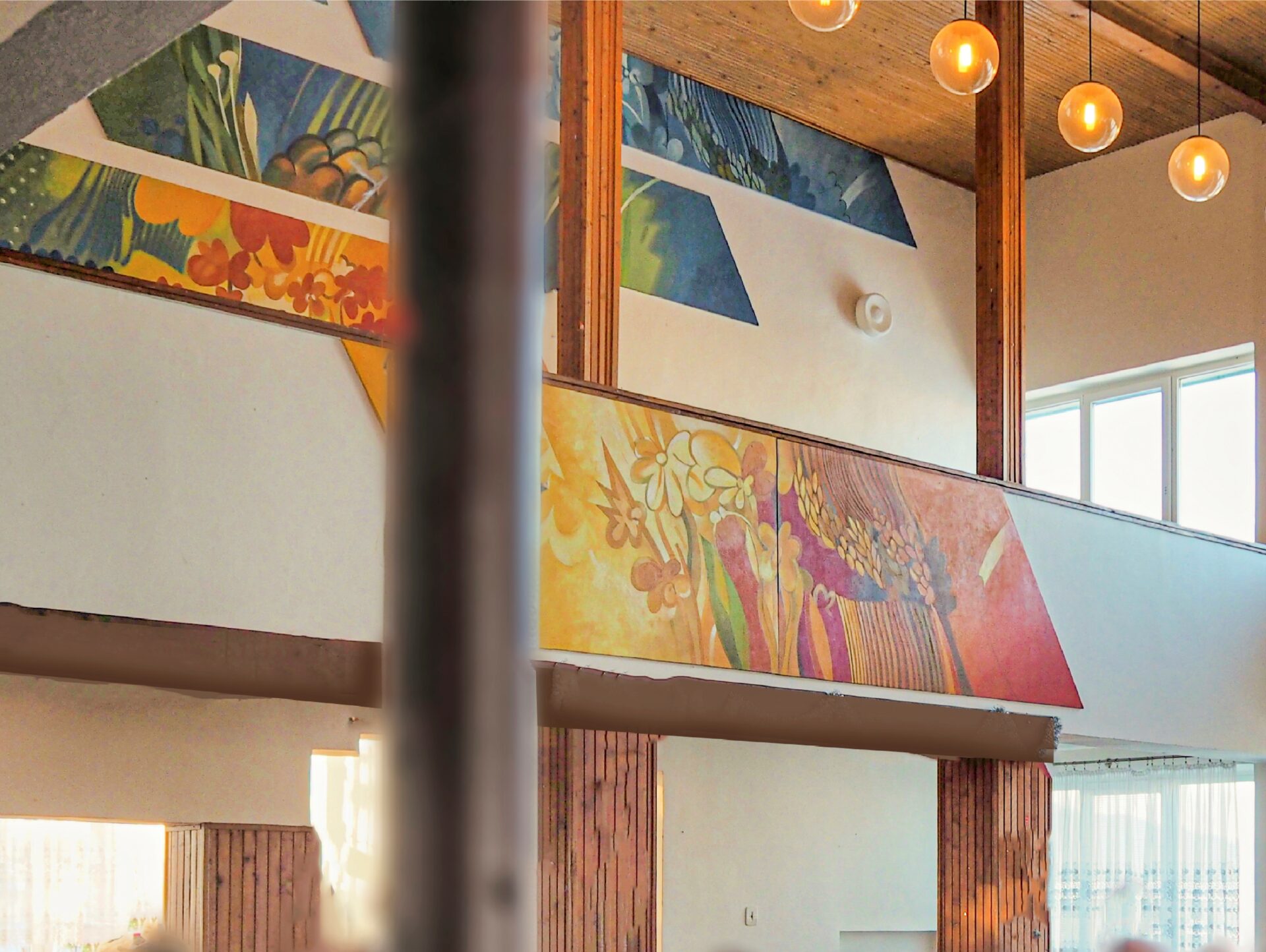
The Municipal Office situated in a picturesque mountain scenery of northern Slovakia, has been, since the first concept, designed as a building to serve multiple purposes, given the small population in the village. In addition to premises intended for culture, nowadays the building also houses the administrative premises, post office, kindergarten, and respective sanitary and technical facilities. The building interior, relatively modest in architectural terms, reflected the period tendencies, where the direction towards a greater austerity and simplicity of shapes prevailed over the previously used sharp contrasts of expression and noticeable geometric motifs. The presented interior with this concept is an example of many interiors realised in the 1980s, mainly in smaller villages across Slovakia.
An all-purpose village hall with a capacity of 150 visitors and a ceremony hall used primarily for holding performing ceremonies are the central hub of cultural and social events. The original architectural concept was specific for raising the importance of the kitchen to make it a significant, irreplaceable part of the interior. The kitchen interior, rather rich in technology equipment for the given era, was connected with the hall by means of a structural opening for serving food thus providing a visual connection and helping create intimate, home-like atmosphere during family celebrations and other events. The dominant formative substance of the hall is a gallery, nowadays in a modified shape, bringing into the interior a feeling of airiness and spaciousness. In the past, the floor surface was made of ceramic tiling in earthy brown tones and the wall plaster was of white colour. Walls, ceilings and columns were panelled with vertically placed wooden slats which were made using the coniferous wood typical for this location. The hanging globe-style lights were of simple geometric morphology and as a whole gave a timeless and elegant impression. A classic spatial concept based on the modesty of expression, inconspicuous, local materiality and earthy tones of the furniture together created almost an ideal artistic background to install large-scale works of art, attractive via both their colours and their themes, which have become the expressive dominant, identity components of the interior for a long time. [1, 3]
The building’s exterior and interior were completely renovated in 2017–2020. A vast revitalisation introduced many changes and hence the original feature attributes, morphology- character, materiality, and the original identity of the premises have been abandoned almost completely, except for the characteristic white-and-brown combination of colours in the building interior which has been preserved. During the process the visuals of the interior were reworked and saw a sweeping change. With this, a series of large-scale paintings and low-reliefs, welcoming the visitors over many a year, was removed. [3]
- Interviews with Ivan Patrón, first director of the Cultural Centre in Oravské Veselé. [3 May 2022]
- Kolesár Zdeno: Nové Kapitoly z dejín dizajnu – Slovenské centrum dizajnu. [New Chapters from Design History – Slovak Design Centre.] 225 p., 2009.
- Ridzoňová, Klaudia: Kultúrny dom v Oravskom Veselom [Cultural Centre in Oravské Veselé.] Seminar paper for the Public Interior course. Faculty of Architecture and Design STU Bratislava, Summer Term 2021–22
Ivan Patrón
